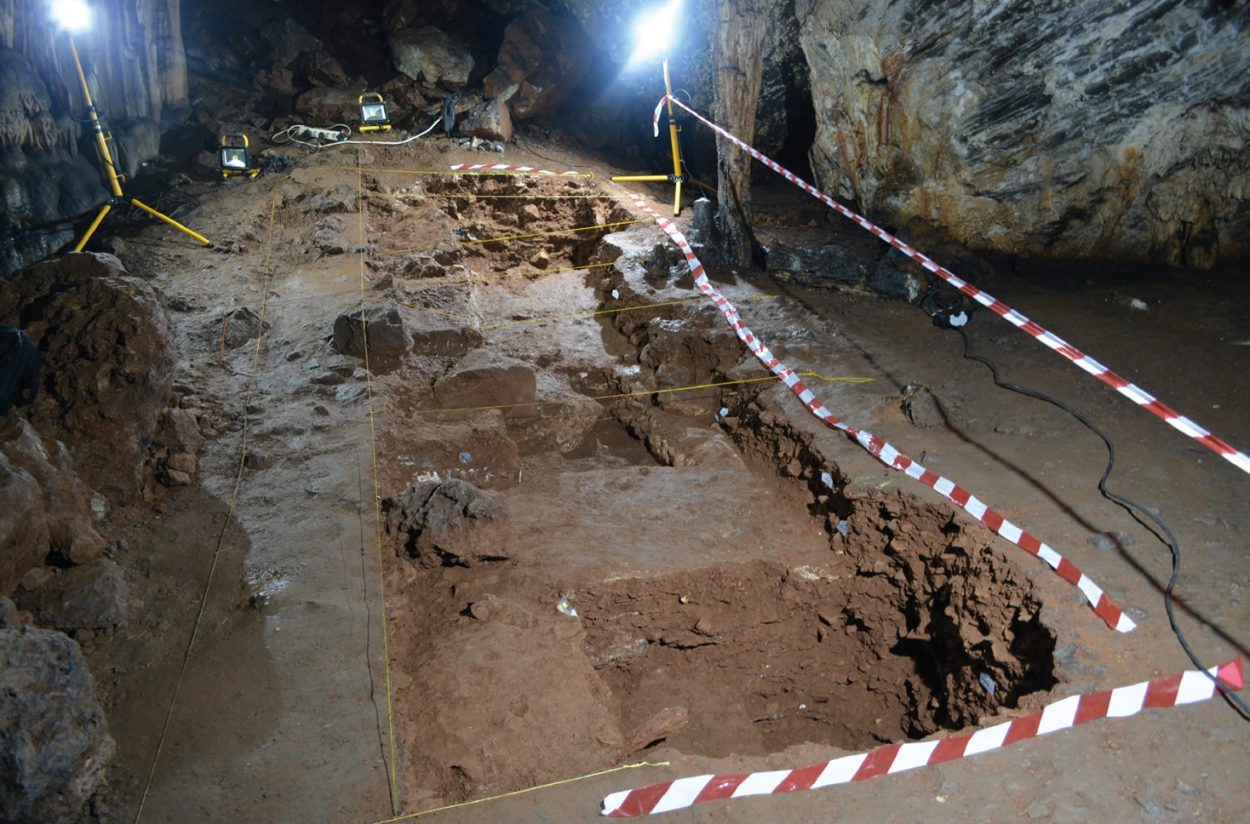A cave in southern Spain was used by ancient humans as a canvas for artwork and as a burial place for over 50,000 years, according to a study published in the open-access journal PLOS ONE by José Ramos-Muñoz of the University of Cadiz, Spain.
Cueva de Ardales, a cave in Málaga, Spain, is famous for containing over 1,000 paintings and engravings made by prehistoric people, as well as artefacts and human remains. However, the nature of human usage of this cave has not been well-understood. In this study, the authors present the results of the first excavations in this cave, which shed light on the history of human culture in the Iberian Peninsula.
A combination of radiometric dating and analysis of remains and artefacts within the cave provide evidence that the site’s first occupants were likely Neanderthals over 65,000 years ago. Modern humans arrived later, around 35,000 years ago, and used the cave sporadically until as recently as the beginning of the Copper Age. The oldest rock art in the cave consists of abstract signs such as dots, finger tips, and hand-stencils created with red pigment, while later artwork depicts figurative paintings such as animals. Human remains indicate the use of the cave as a burial place in the Holocene, but evidence of domestic activities is extremely poor, suggesting humans were not living in the cave.
These results confirm the importance of Cueva de Ardales as a site of high symbolic value. This site provides an incredible history of human activity in Spain, and along with similar sites – there are more than 30 other caves in the region with similar paintings – makes the Iberian Peninsula a key locality for investigating the deep history of European culture.
The authors add: “Our research presents a well-stratified series of more than 50 radiometric dates in Cueva de Ardales that confirm the antiquity of Palaeolithic art from over 58,000 years ago. It also confirms that the cave was a place of special activities linked to art, as numerous fragments of ochre were discovered in the Middle Palaeolithic levels.”
https://doi.org/10.1371/journal.pone.0266788
Header Image Credit : PLOS





